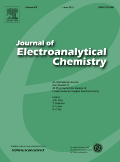
Journal of Electroanalytical Chemistry
Scope & Guideline
Catalyzing Progress in Electroanalytical Techniques
Introduction
Aims and Scopes
- Electrochemical Energy Storage:
Research on novel materials and methods for lithium-ion, sodium-ion, and other energy storage systems, including batteries and supercapacitors. - Electrochemical Sensors:
Development and optimization of electrochemical sensors for detecting various analytes, including drugs, environmental pollutants, and biomarkers. - Electrocatalysis:
Studies focused on electrocatalytic materials and processes for energy conversion applications, particularly in fuel cells and water splitting. - Environmental Electrochemistry:
Research addressing the electrochemical treatment of pollutants, waste management, and the development of sustainable electrochemical processes. - Fundamental Electrochemical Studies:
Theoretical and experimental investigations into the mechanisms of electrochemical reactions, including surface interactions and mass transport phenomena. - Nanomaterials in Electrochemistry:
Exploration of nanostructured materials and their applications in enhancing electrochemical performance across various systems.
Trending and Emerging
- Sustainable and Green Chemistry:
Research focused on environmentally friendly electrochemical processes and materials, including the development of biodegradable sensors and sustainable energy storage solutions. - Hybrid Energy Storage Systems:
The integration of different energy storage technologies, such as supercapacitors and batteries, is gaining traction, leading to innovative designs like hybrid supercapacitors. - Advanced Electrocatalysts for Energy Conversion:
A surge in studies on novel electrocatalysts that facilitate efficient energy conversion processes, particularly for hydrogen production and CO2 reduction. - Biomimetic and Bio-Inspired Electrochemistry:
Emerging interest in biomimetic systems and bio-inspired materials that replicate natural processes for applications in sensing and energy conversion. - Machine Learning and AI in Electrochemistry:
The application of machine learning and artificial intelligence techniques to enhance the understanding of electrochemical processes and improve sensor design. - Electrochemical Biosensors:
A growing focus on electrochemical biosensors that leverage advanced materials and nanotechnology for sensitive and selective detection of biomarkers.
Declining or Waning
- Traditional Electrode Materials:
There has been a noticeable decline in research focused on conventional electrode materials, as researchers shift towards innovative nanomaterials and composites that offer superior performance. - Basic Electrochemical Theory:
While foundational theories remain important, the focus on basic electrochemical principles without application to novel technologies has decreased, with more emphasis now placed on practical applications and advancements. - Single Sensor Applications:
The trend of developing standalone sensors for single analytes is waning, as there is a growing preference for multiplexed or integrated sensing systems that can detect multiple analytes simultaneously. - Conventional Corrosion Studies:
Research specifically focused on traditional corrosion mechanisms has become less frequent, as more interdisciplinary approaches integrating electrochemistry with materials science are being favored.
Similar Journals

Journal of Analysis and Testing
Exploring the forefront of analytical methodologies.Journal of Analysis and Testing is a premier academic journal published by SPRINGER SINGAPORE PTE LTD, dedicated to advancing the fields of analytical and environmental chemistry. With ISSN 2096-241X and E-ISSN 2509-4696, the journal has established a significant presence since its inception in 2017, converging its focus until 2024. The journal's outstanding rankings in 2023, including Q1 quartile placements in Analytical Chemistry, Instrumentation, and Spectroscopy, underscore its pivotal role in disseminating high-quality research. Researchers can access cutting-edge studies that explore innovative testing methodologies, electrochemical analyses, and material evaluations, making it an essential resource for professionals and students alike. The Journal of Analysis and Testing not only celebrates advances in science and technology but also promotes interdisciplinary collaborations, ensuring widespread impact across analytical and environmental domains. As such, this journal plays a vital role in shaping the future of analytical practices and methodologies, positioning itself as a key conduit for knowledge exchange in the scholarly community.
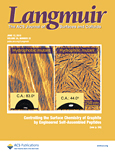
LANGMUIR
Connecting Scholars through Rigorous Scientific InquiryLANGMUIR is a prominent peer-reviewed journal published by the American Chemical Society, serving as a vital platform for research in various fields, including condensed matter physics, materials science, electrochemistry, and spectroscopy. With an ISSN of 0743-7463 and an E-ISSN of 1520-5827, this journal has established itself as a reputable source of cutting-edge scientific findings since its inception in 1985. Recognized for its rigorous academic standards, LANGMUIR holds significant ranking positions, including Q1 in condensed matter physics and spectroscopy, and Q2 categories in electrochemistry and materials science, reflecting its impactful contributions to these disciplines. Although the journal does not currently offer open access, it continues to foster collaboration and discussion among researchers by publishing high-quality articles that explore the frontiers of chemistry and physics. By engaging with LANGMUIR, readers can stay informed about the latest advances in surface and interface science, making it an essential resource for professionals, researchers, and students dedicated to these fields.
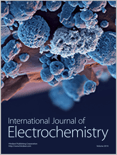
International Journal of Electrochemistry
Transforming knowledge into applications in electrochemistry.The International Journal of Electrochemistry, published by HINDAWI LTD, serves as a premier outlet for cutting-edge research in the expansive field of electrochemistry. With an ISSN of 2090-3529 and an E-ISSN of 2090-3537, this open-access journal has been contributing to the advancement of scientific knowledge since 2011, making its content freely available to researchers, industry professionals, and students around the globe. The journal aims to foster innovation by disseminating high-quality research articles, reviews, and technical notes that encompass a wide range of topics from fundamental electrochemical principles to practical applications in energy storage, sensors, and material development. With a focus on promoting interdisciplinary collaboration and advancing the understanding of electrochemical systems, the International Journal of Electrochemistry is a vital resource for anyone involved in electrochemical research and its applications.
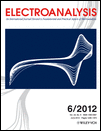
ELECTROANALYSIS
Empowering Researchers with High-Impact Electroanalytical FindingsELECTROANALYSIS is a premier journal published by WILEY-V C H VERLAG GMBH that serves the dynamic field of analytical and electrochemistry. Established in 1989, this scholarly publication has successfully converged its focus to cover a wide array of topics including novel electrochemical methods, sensor technology, and environmental analysis, reflecting the latest advancements and trends in the field. With an impressive 2023 impact factor that places it in the Q2 quartile of Analytical Chemistry and Q3 quartile in Electrochemistry, the journal is recognized for its high-quality research and contributions. Its Scopus rankings further reinforce its credibility, standing at #46/156 in Analytical Chemistry and #26/60 in Electrochemistry. Although currently not offering Open Access, the journal remains a significant resource for researchers, professionals, and students keen to stay at the forefront of electroanalytical techniques. With a global readership, ELECTROANALYSIS continues to drive knowledge and innovation within the scientific community.

JOURNAL OF THE ELECTROCHEMICAL SOCIETY
Unleashing the Potential of Electrochemical ApplicationsJOURNAL OF THE ELECTROCHEMICAL SOCIETY, published by the ELECTROCHEMICAL SOCIETY INC, is a leading peer-reviewed academic journal dedicated to advancing the field of electrochemistry and its myriad applications. With an ISSN of 0013-4651 and E-ISSN of 1945-7111, this esteemed journal has been a pivotal platform for research since its inception in 1948, with convergence periods allowing for a rich historical context of study through to 2024. Recognized for its high impact, it holds a noteworthy Q1 ranking in several categories including Condensed Matter Physics and Materials Chemistry, and it is Q2 ranked in both Electrochemistry and Renewable Energy. This journal features a range of articles that encompass both theoretical and experimental advancements, making it a crucial resource for researchers, professionals, and students keen on exploring cutting-edge developments in materials science, energy solutions, and sustainable technologies. Although it is not an open access journal, its rigorous standards ensure that published work significantly contributes to the body of knowledge within its fields, fostering innovative research and collaborative progress.
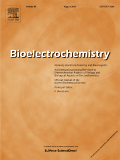
BIOELECTROCHEMISTRY
Advancing the Frontiers of Bioelectrochemical ResearchBIOELECTROCHEMISTRY, published by Elsevier Science SA, is a leading academic journal that focuses on cutting-edge research in the fields of biophysics, electrochemistry, and miscellaneous medicine with a commendable impact factor reflecting its significance in the scientific community. Established in 2000 and continuing until 2025, the journal resides in the Netherlands and has been ranked in the Q2 category across various relevant disciplines, such as Biochemistry, Genetics and Molecular Biology, and Physical and Theoretical Chemistry, showcasing its quality and relevance. With a Scopus ranking that places it among the top journals in its categories—including an impressive 12th rank in Electrochemistry—BIOELECTROCHEMISTRY serves as a critical platform for researchers and professionals seeking to disseminate and engage with innovative findings. While the journal does not offer Open Access options, its reputation and reach make it an essential reference point for anyone involved in bioelectrochemical studies. The journal’s commitment to advancing knowledge in electrochemical applications in biological systems ensures its esteemed position in academia.

Electrocatalysis
Catalyzing Innovation in Electrocatalysis Research.Electrocatalysis, published by SPRINGER, is a leading journal dedicated to advancing the field of electrochemistry, providing a comprehensive platform for the dissemination of cutting-edge research and innovative methodologies from 2010 to 2024. With an ISSN of 1868-2529 and an E-ISSN of 1868-5994, this journal has established a reputable presence, ranking in the Q3 category of the electrochemistry segment as of 2023 and positioning itself within the 29th out of 60 in the Scopus classification. The journal welcomes submissions that explore a wide array of topics involving electrocatalysts, their applications, mechanisms, and advancements, aiming to catalyze the understanding of electrochemical systems and foster interdisciplinary collaborations. Although the journal is not openly accessible, it remains a vital resource for researchers, professionals, and students seeking to stay abreast of the latest findings and theoretical developments in this dynamic field.

ACTA CHIMICA SINICA
Elevating Chemical Research Standards GloballyACTA CHIMICA SINICA, published by SCIENCE PRESS, is a distinguished peer-reviewed journal in the realm of Chemistry, specifically focusing on general and miscellaneous chemistry fields. Since its inception in 1982, the journal has consistently contributed to the advancement of chemical research in China and beyond, maintaining a reputable standing within the academic community, evidenced by its 2023 Scopus ranking of #197 out of 408 in its category. With a current impact factor placing it in the Q3 quartile, ACTA CHIMICA SINICA aims to disseminate innovative research findings, covering a wide spectrum of topics within the discipline. Although it is not an open-access journal, it offers various access options through institutional subscriptions, ensuring that its high-quality content is available to a broad audience. Researchers, professionals, and students alike will find this journal a vital resource for keeping abreast of developments in the field and for contributing their own findings to an engaged scientific community.

Applied Chemistry for Engineering
Transforming Research into Engineering ExcellenceApplied Chemistry for Engineering, published by the Korean Society of Industrial and Engineering Chemistry, is a vital resource for researchers and professionals engaged in the realms of chemical engineering and applied chemistry. With an ISSN of 1225-0112 and an E-ISSN of 1228-4505, this journal serves as a platform for innovative research that spans diverse applications within these fields. Although currently not classified under open access, it provides critical insights and advancements to its audience, contributing to the ongoing discourse in the industry. The journal's significance is underscored by its rankings in Scopus, where it resides in the Q4 category for both Chemical Engineering and Chemistry, evidencing its commitment to publishing relevant studies despite its emerging status. As it continues to grow through the converged years from 2007 to 2024, Applied Chemistry for Engineering aims to bridge the gap between theoretical research and practical engineering solutions, making it an essential tool for students, researchers, and professionals alike.
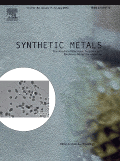
SYNTHETIC METALS
Pioneering Research in Condensed Matter Physics.SYNTHETIC METALS is a leading academic journal published by Elsevier Science SA, focusing on the interdisciplinary field of materials science with an emphasis on the development and application of synthetic metallic materials. Established in 1979, this esteemed journal offers a platform for innovative research that promotes advancements in condensed matter physics, electronic materials, materials chemistry, and mechanical engineering. With an impressive Q1 ranking in Metals and Alloys and Q2 rankings across various other categories, SYNTHETIC METALS serves as a vital resource for researchers, professionals, and students seeking to explore complex material systems and their applications in industry. Although it does not currently offer open access, the journal's impact is highlighted by its robust Scopus rankings, ensuring high visibility and dissemination of meaningful research outcomes. As it progresses through its convergence period to 2024, SYNTHETIC METALS remains dedicated to advancing knowledge and fostering scientific inquiry in the field of materials science.